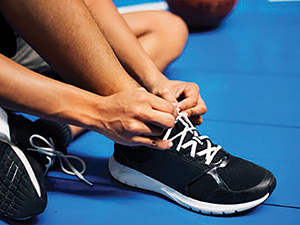Five Things You Should Know About Running Injuries

“Hi Dr. Davis. I’m a 38-year-old mom of two and my new year’s resolution is to train for a half marathon and then maybe even a triathlon. I haven’t run in a long time and I’d really like to make my resolution stick this year. I’m most worried about how to keep from getting injured as I get back into running again after (yikes) 10 years off. I’ve had shin splints in the past and am starting to have similar issues again even at really low mileage. I’m worried that this will set me back or I’ll lose motivation like I did last time I tried to train for a race. Is there anything you can recommend?”
—Mary L, South Austin
This is one of the hundreds of emails we have received from potential clients at RunLab over the years asking how to stay injury-free when picking up running for the first time. As a kickoff to the new year, a time in which many new runners hit the trails and treadmills, here are five things you should know about running injuries:
1. Not all injuries require a break from running. However, this requires you seek help early and don’t let your injury escalate to the point of no return. At RunLab, we are advocates of active care and prefer to help you get to the root biomechanical cause of the injury, because even if you rest the area, the issue is likely to return if you haven’t changed the movement pattern underlying it.
2. Building on the statement above and based on years of data gathering in our clinic, there are certain symptoms which require immediate rest until a diagnosis can be rendered. These include: heel pain, pain deep in the inguinal region of the hip, pain on the inside of the shin and instability or buckling of the knee.
3. Running more does not guarantee you will be a better runner. Understanding the way your body needs to move based on its unique structure, range-of-motion, strengths and limiters is the first step to building a plan for your unique goals. Increasing your mileage without addressing poor movement patterns will almost inevitably result in injury.
4. Runners are typically strong in one plane and weak in the other two, especially if they don’t cross-train correctly. Strength and stability work will help prevent injury, but the cross-training needs to be focused on the weak (frontal and transverse) planes. Hint: biking and/or freestyle swimming won’t cut it.
5. Running isn’t bad for you, bad running is bad for you, but that is specific to the person. Learn how you should move and don’t base that on the way others move.
THE TAKE HOME MESSAGE:
Your body is unique, your strengths and limiters are unique, and your movement patterns are as unique to you as your fingerprint. It’s important to understand YOUR body not only to prevent injury, but also so you can hit those finish line goals along the way.
Happy trails!
Dr. Kimberly Davis






